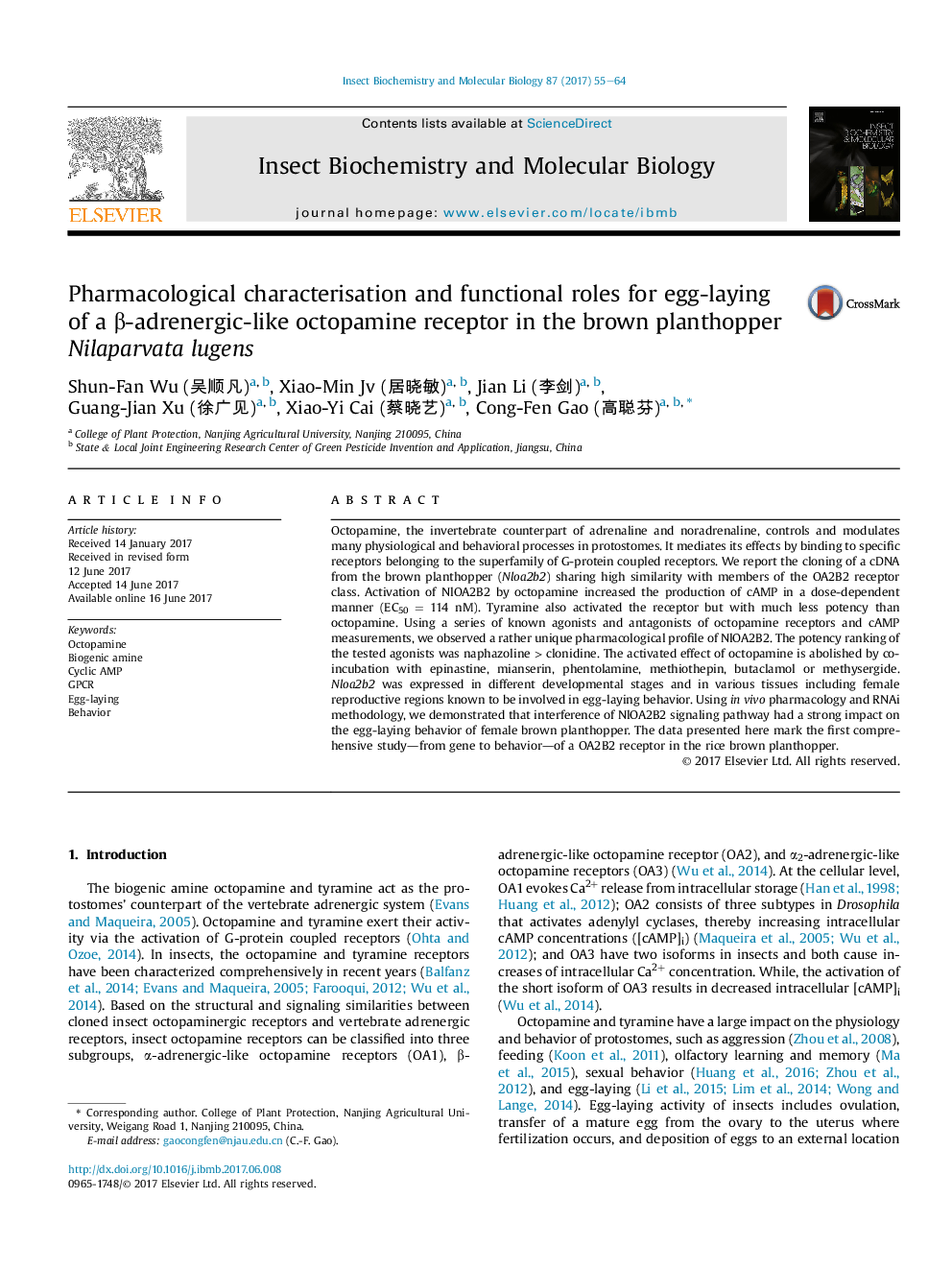| Article ID | Journal | Published Year | Pages | File Type |
|---|---|---|---|---|
| 5511131 | Insect Biochemistry and Molecular Biology | 2017 | 10 Pages |
â¢We functionally characterized the first brown planthopper octopamine receptor, NlOA2B2, in HEK-293 cells.â¢NlOA2B2 exclusively induces cAMP synthesis upon activation.â¢NlOA2B2 is effectively blocked by several antagonists.â¢Blockage of NlOA2B2 signaling pathway impairs the egg-laying behavior of brown planthopper.
Octopamine, the invertebrate counterpart of adrenaline and noradrenaline, controls and modulates many physiological and behavioral processes in protostomes. It mediates its effects by binding to specific receptors belonging to the superfamily of G-protein coupled receptors. We report the cloning of a cDNA from the brown planthopper (Nloa2b2) sharing high similarity with members of the OA2B2 receptor class. Activation of NlOA2B2 by octopamine increased the production of cAMP in a dose-dependent manner (EC50 = 114 nM). Tyramine also activated the receptor but with much less potency than octopamine. Using a series of known agonists and antagonists of octopamine receptors and cAMP measurements, we observed a rather unique pharmacological profile of NlOA2B2. The potency ranking of the tested agonists was naphazoline > clonidine. The activated effect of octopamine is abolished by co-incubation with epinastine, mianserin, phentolamine, methiothepin, butaclamol or methysergide. Nloa2b2 was expressed in different developmental stages and in various tissues including female reproductive regions known to be involved in egg-laying behavior. Using in vivo pharmacology and RNAi methodology, we demonstrated that interference of NlOA2B2 signaling pathway had a strong impact on the egg-laying behavior of female brown planthopper. The data presented here mark the first comprehensive study-from gene to behavior-of a OA2B2 receptor in the rice brown planthopper.
Graphical abstractDownload high-res image (276KB)Download full-size image
